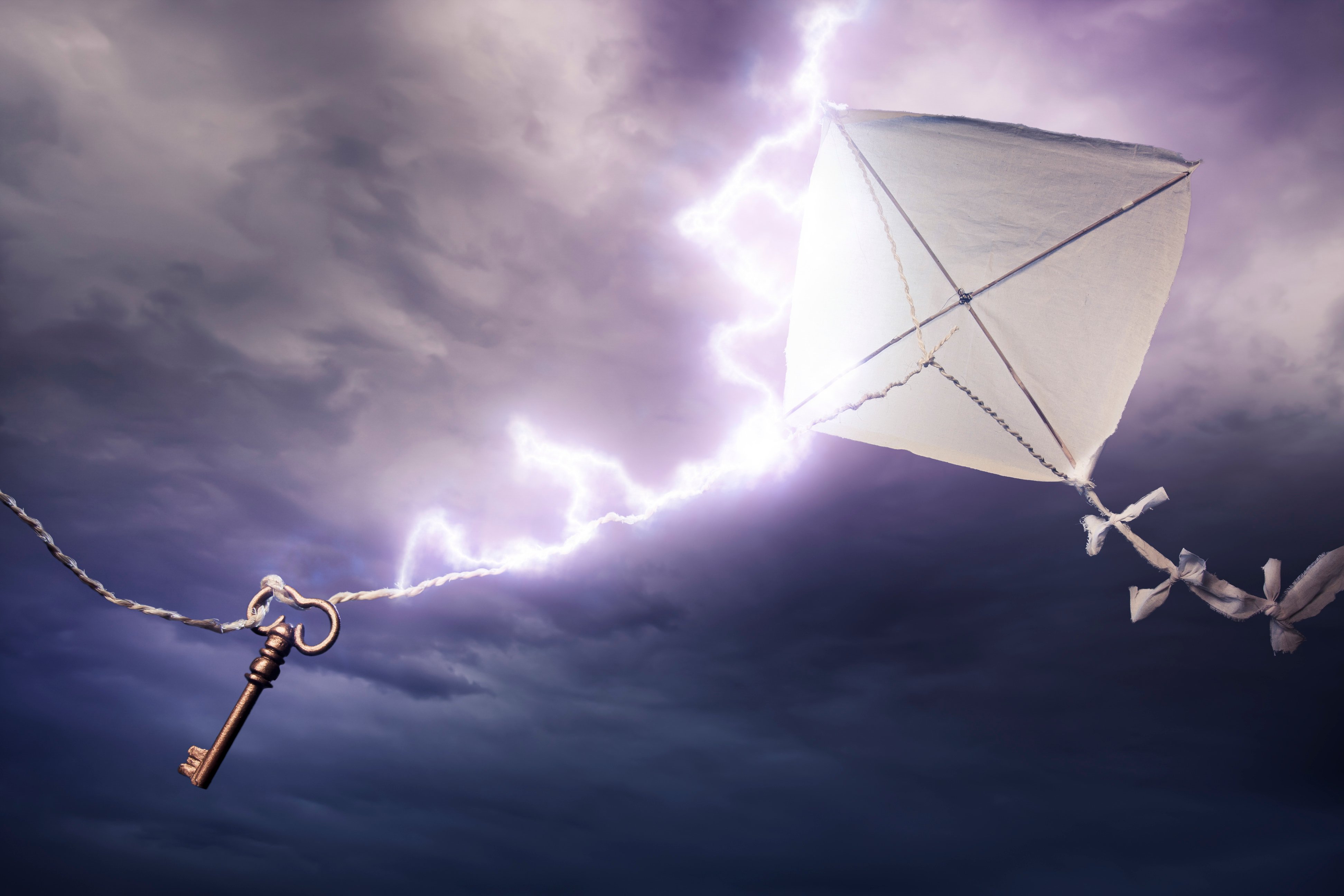
He moved his hand near the key and observed an electric spark, proving the electric nature of lightning. However, Franklin did notice that loose threads of the kite string were repelling each other and deduced that the Leyden jar was being charged. "At this key he charged phials, and from the electric fire thus obtained, he kindled spirits, and performed all other electrical experiments which are usually exhibited by an excited globe or tube." The kite was not by visible lightning had it been, Franklin would almost certainly have been killed. A house key belonging to Benjamin Loxley was attached to the hemp string and connected to a Leyden jar a silk string was attached to this.

This enabled Franklin and his son to keep the silk string of the kite dry to insulate them while the hemp string to the kite was allowed to get wet in the rain to provide conductivity. This allowed him to stay on the ground while his son assisted him to fly the kite from the shelter of a nearby shed. 1860) which was used on the $10 National Bank Note from the 1860s to 1890s.Īccording to the 1767 Priestley account, Franklin realized the dangers of using conductive rods and instead used the conductivity of a wet hemp string attached to a kite.

The BEP engraved the vignette Franklin and Electricity (c. A more complete account of Franklin's experiment was given by Joseph Priestley in 1767, who presumably learned the details directly from Franklin, who was in London at the time Priestley wrote the book. This account was read to the Royal Society on December 21 and printed as such in the Philosophical Transactions. Franklin described the experiment in the Pennsylvania Gazette in October 19, 1752, without mentioning that he himself had performed it. Franklin's kite experimentįranklin's kite experiment was performed in Philadelphia in June 1752, according to the account by Priestley. However, the spire at Christ Church was not added until 1754. Franklin himself is said to have conducted the experiment in June 1752, supposedly on the top of the spire on Christ Church in Philadelphia. An attempt to replicate the experiment killed Georg Wilhelm Richmann in Saint Petersburg in August 1753 he was thought to be the victim of ball lightning. Such an experiment was carried out in May 1752 at Marly-la-Ville in northern France by Thomas-François Dalibard. In 1752, Franklin proposed an experiment with conductive rods to attract lightning to a leyden jar, an early form of capacitor. The physicist Jacques de Romas also wrote a mémoire with similar ideas that year, and later defended them as independent of Franklin's. The same year, Franklin reversed his previous skepticism of electrical lightning's attraction to high points. In 1750, it was the subject of public discussion in France, with a dissertation of Denis Barberet receiving a prize in Bordeaux Barberet proposed a cause in line with the triboelectric effect. Learn more about the lightning rod.Speculations of Jean-Antoine Nollet had led to the issue of the electrical nature of lightning being posed as a prize question at Bordeaux in 1749. "May not the knowledge of this power of points be of use to mankind, in preserving houses, churches, ships, etc., from the stroke of lightning, by directing us to fix, on the highest parts of those edifices, upright rods of iron made sharp as a needle.Would not these pointed rods probably draw the electrical fire silently out of a cloud before it came nigh enough to strike, and thereby secure us from that most sudden and terrible mischief!"įranklin’s pointed lightning rod design proved effective and soon topped buildings throughout the Colonies. Having noticed that a sharp iron needle conducted electricity away from a charged metal sphere, he theorized that such a design could be useful: By 1749, he had turned his attention to the possibility of protecting buildings-and the people inside-from lightning strikes. Franklin is known for his experiments with electricity - most notably the kite experiment - a fascination that began in earnest after he accidentally shocked himself in 1746.


 0 kommentar(er)
0 kommentar(er)
